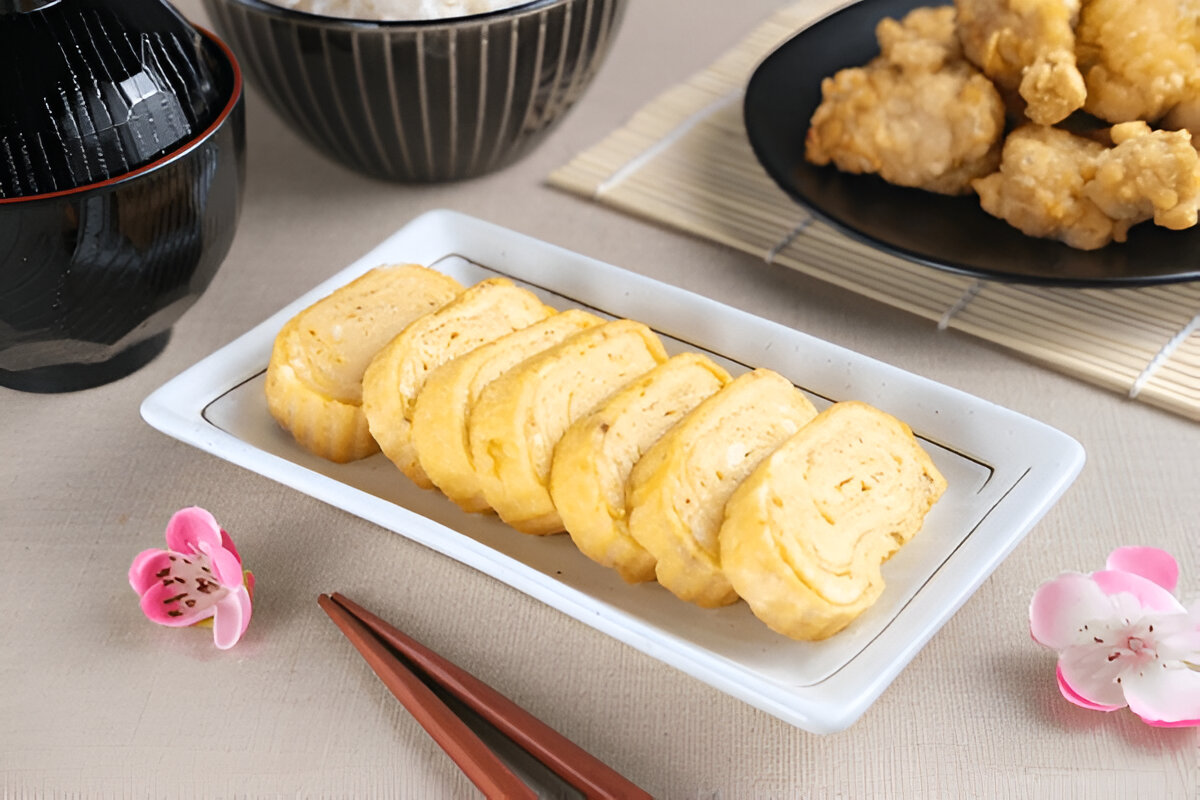Japanese Tamago, also known as Tamagoyaki, is a fluffy rolled omelet that carries a balance of sweet and savoury flavours. Popular in Japanese cuisine, it is often served in sushi restaurants or as a side dish in bento boxes. This dish highlights the artistry of Japanese cooking with its delicate layers and soft texture.
Japanese Tamago Egg :
Tamago has been part of Japanese food culture for centuries. Inspired by influences from China, Japanese chefs refined it into a dish that balances simplicity and flavour. Over time, it became a staple in both home cooking and fine dining.
History of Japanese Tamago Egg:
The Japanese Tamago Egg Originally influenced by Chinese cooking methods, Japanese chefs refined the recipe to create a light, sweet, and savoury omelet. Over centuries, it became a traditional dish served in sushi restaurants, bento boxes, and even at breakfast tables.
Subscribe to our youtube channel Kitchenpedia for more delicious recipes and hit the like button if you enjoyed this youtubevideo. Share it with your friends and Family.
Tamago Egg
Ingredients
- 4 large eggs
- 2 tablespoons sugar
- 1 tablespoon soy sauce
- 1 tablespoon mirin (Japanese sweet rice wine)
- 2 tablespoons dashi stock (optional, for extra umami)
- A pinch of salt
- 1 teaspoon vegetable oil (for cooking)
Instructions
- Crack eggs into a bowl and beat them until smooth.
- Add soy sauce, sugar, mirin, and dashi if desired.
- Heat a rectangular Tamago pan or non-stick skillet.
- Lightly oil the pan to prevent sticking.
- Pour a thin layer of egg mixture into the pan.
- Roll the cooked layer gently toward one side.
- Push the rolled egg back and add another layer of mixture.
- Repeat the process until all egg mixture is used.
- Shape the rolled omelet and let it rest before slicing.
Notes
- A rectangular Tamago pan creates the best shape, but a round non-stick skillet works as well.
- Resting the rolled omelet for a few minutes makes slicing easier.
- Dashi stock enhances umami flavour, though it is optional.
Tips for Tamago Egg :
-
Beat eggs thoroughly for a smooth texture.
-
Use low to medium heat to avoid browning.
-
Roll gently and evenly to keep layers intact.
-
Adjust sugar for your preferred sweetness.
FAQ’s for Tamago Egg :
Q: Can I make Tamago without mirin?
Yes, you can substitute mirin with a small amount of rice vinegar and sugar.
Q: Can Tamago be made in advance?
Yes, you can refrigerate it for up to 2 days and serve cold or reheated.
Q: Is Tamago suitable for kids?
Absolutely. Its mild, slightly sweet flavour makes it a favourite among children.
Conclusion:
Japanese Tamago Egg is more than just an omelet—it is a culinary art form. Its delicate layers, balanced flavour, and cultural significance make it a must-try dish. Whether you cook it for breakfast, lunch, or dinner, Tamago always brings comfort and joy to the table.


